Taste Budz
Ameliorate food accessibility issue
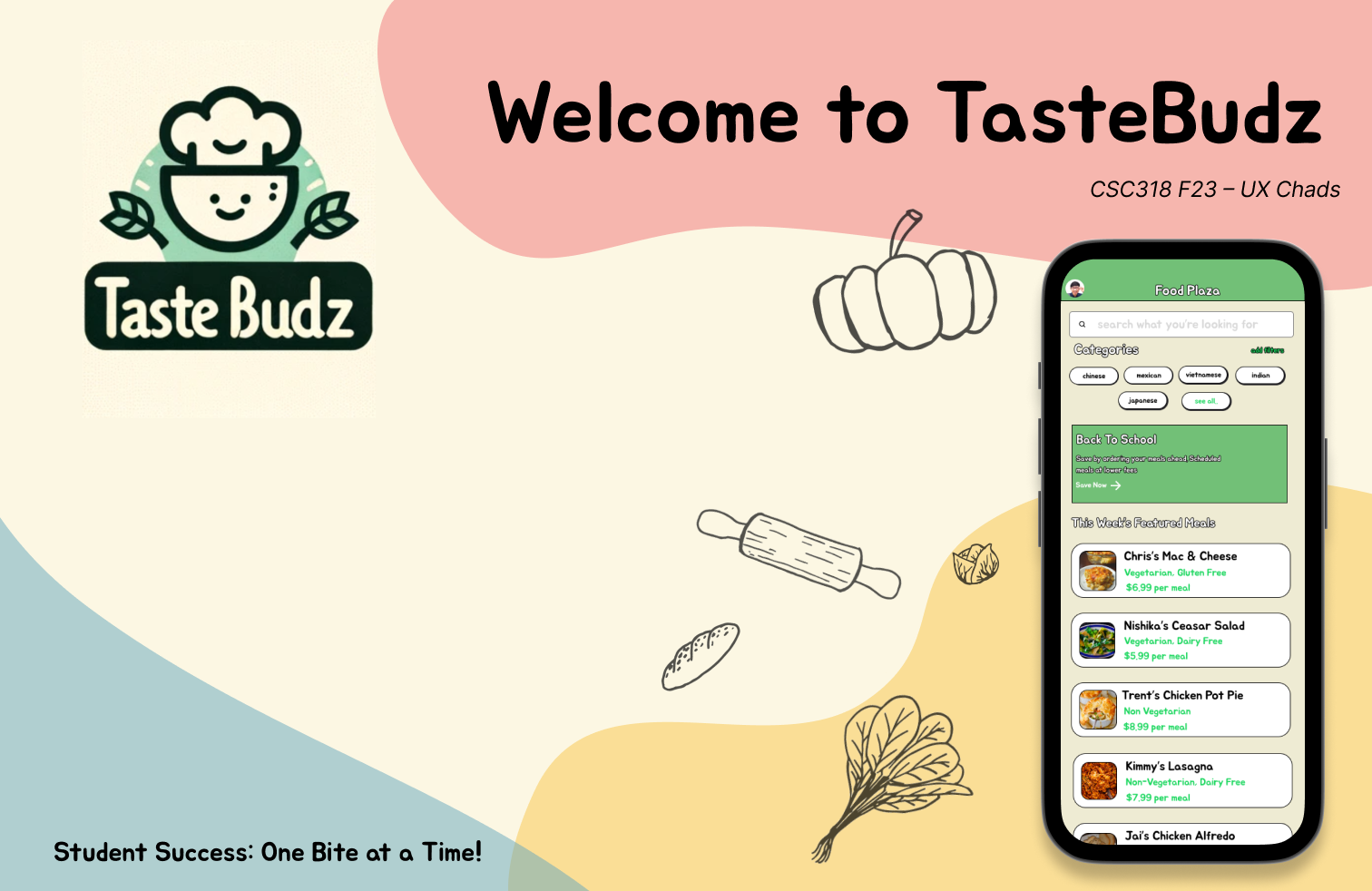
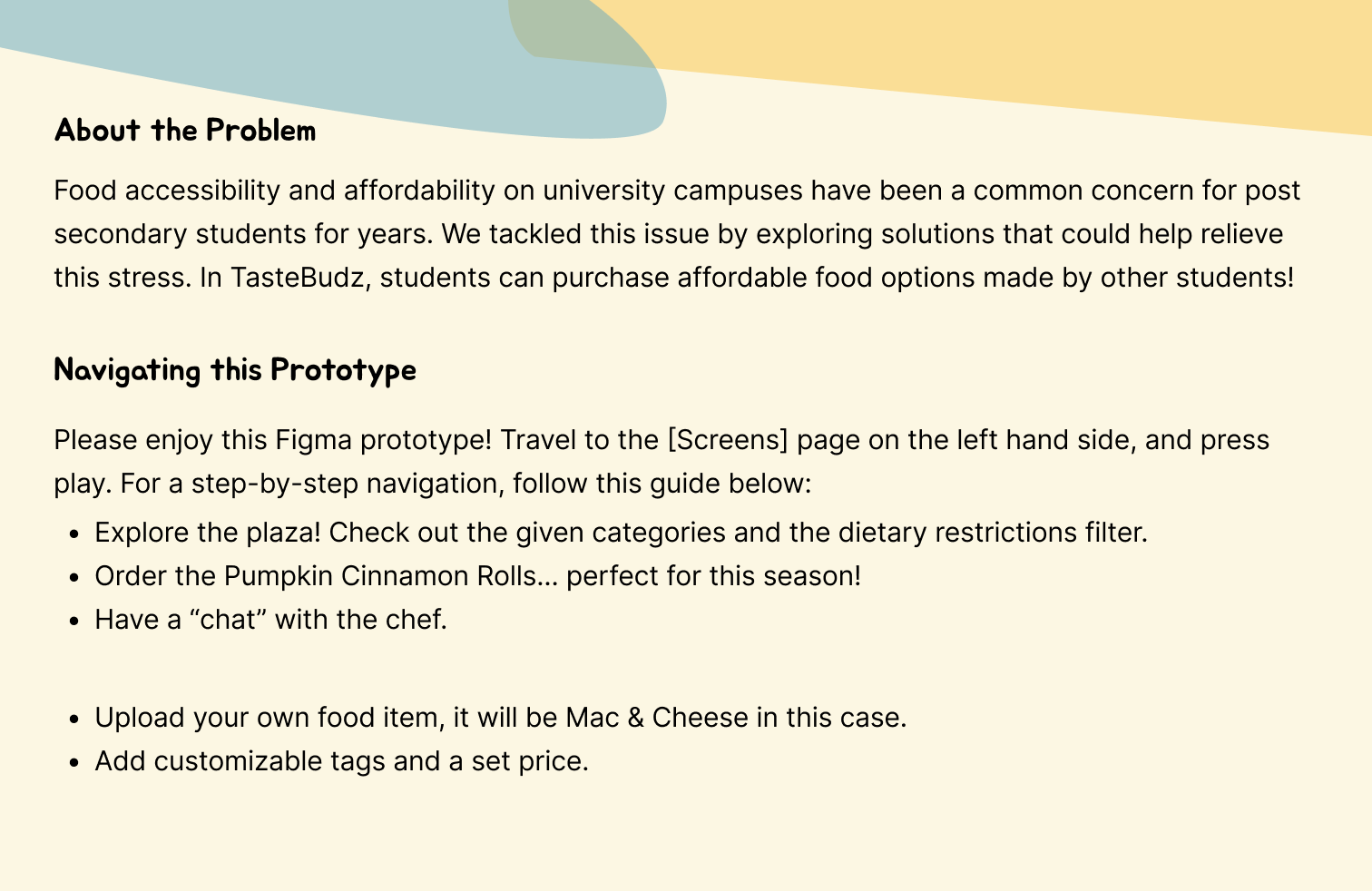
Project Info:
- Tools: Figma
- Date of Completion: 2023.12
- Contribution: UX Researcher&Designer
- Study Reports&Research Materials: Studies Reports
- Project Experience Link: Taste Budz
Challenge
We need to care about them.
In Canada, the major problem of concurrent food insecurity and waste is a growing socio-economic issue that has significantly intensified over the last two decades.
Due to our survey, many student said they had to skip meals despite not wanting to, which may also imply a lack of accessibility. This is a sign that existing solutions to this problem aren't adequate enough to address the needs of the majority of those affected. Thus, instead of focusing on food insecurity as a whole, we are focusing on food accessibility. This focus includes food accessibility regarding pricing, dietary accommodations, etc.
My Roles
I conducted full-process user-research methodologies (i.e. usability testing, speed-dating protocols, interview protocol creation, competitor analysis processes, affinity diagramming, etc.). I also used design strategies such as prototyping in Figma, rapid sketching exercises, feedback and critiquing techniques, and others.
Executive Summary
Goal
Ameliorate food accessibility issue starting from empowering students in University of Toronto through more access to healthy, clean foods.
Solution
We decided to build a student chef market place to ameliorate the food accessibility issue in University of Toronto. The design is for an all-in-one marketplace for students looking to buy premade meals by other students and sell ready-made meals to other students.
The Users
Target Users: Students at University of Toronto.
User Interviews
Our team adopts two options for Formative study, which are questionnaires and interviews.
In our first round of interviews, I conducted 2 interviews with students to get a better understanding of their feelings towards and experiences with negotiating. I co-wrote our interview script, which encouraged storytelling and guided conversation with participants.
Hamza's Experience
-
Finding Suitable Food on Campus
- Hamza, who follows Islamic dietary rules, struggles to find diverse and enjoyable halal food on campus.
-
Balancing Cost and Quality
- Although Hamza can afford to spend $35 daily on food, he often feels guilty when the meals are unsatisfying and go to waste.
-
Skipping Meals and Avoiding Food Banks
- Hamza often skips meals or chooses less healthy options on campus due to the limited food choices. He's uncomfortable using food banks, fearing the quality and facing added complexity as an international student.
Arushi's Experience
-
Graduate Student Life and Food Choices
- Arushi, a graduate student, navigates the challenges of balancing academic demands, personal life, and ensuring access to nutritious food.
-
Leveraging Past Experiences
- Arushi's past experiences navigating challenges in accessing affordable and nutritious food inform her current strategies, such as budgeting and meal planning, to address food insecurity.
-
Digital Platforms and Food Management
- Arushi utilizes digital platforms to streamline her food management, aligning with budget, time, and dietary preferences.
Key Insight from user research
From Questionnaire
- Skipping a meal affects student learning.
- The majority of subjects did not use the food bank, and those who did use the food bank went there only occasionally.
- Some students do not have access to satisfactory food due to limitations in dietary restrictions.
From Interview
- Cost, convenience, and quality are common factors for many students to consider when considering eating, pointing towards a need for more affordable, high-quality food options on campus.
- Students leverage digital platforms to optimize their food management strategies, aligning them with their budget, time, and dietary preferences.
- Food support services are not only high-quality but also make students feel welcoming and accessible to all students, regardless of their background.
Identifying the problem
We have identified a few key points of interest that can be addressed in our research:
- Time-pressed students striving for academic excellence need affordable and easily accessible food options on or around campus that cater to their nutritional requirements, ensuring their physical well-being and enabling them to focus on their studies without the constant worry of food insecurity.
- Students with limited financial resources require convenient and cost-effective food options on or around campus that prioritize their well-being, allowing them to sustain a healthy lifestyle while managing their academic responsibilities without the burden of food insecurity.
- Recent graduates navigating the transition from academia to the workforce need affordable and nutritious food solutions that acknowledge the financial constraints they face, enabling them to maintain a balanced diet and prioritize their career advancement without compromising their health due to food insecurity.
Define
We combined all of our research and observed where our target users' problems existed. We analyzed our insights by ways of persona, empathy map, job stories — which are methods to help define our target users better.
Persona
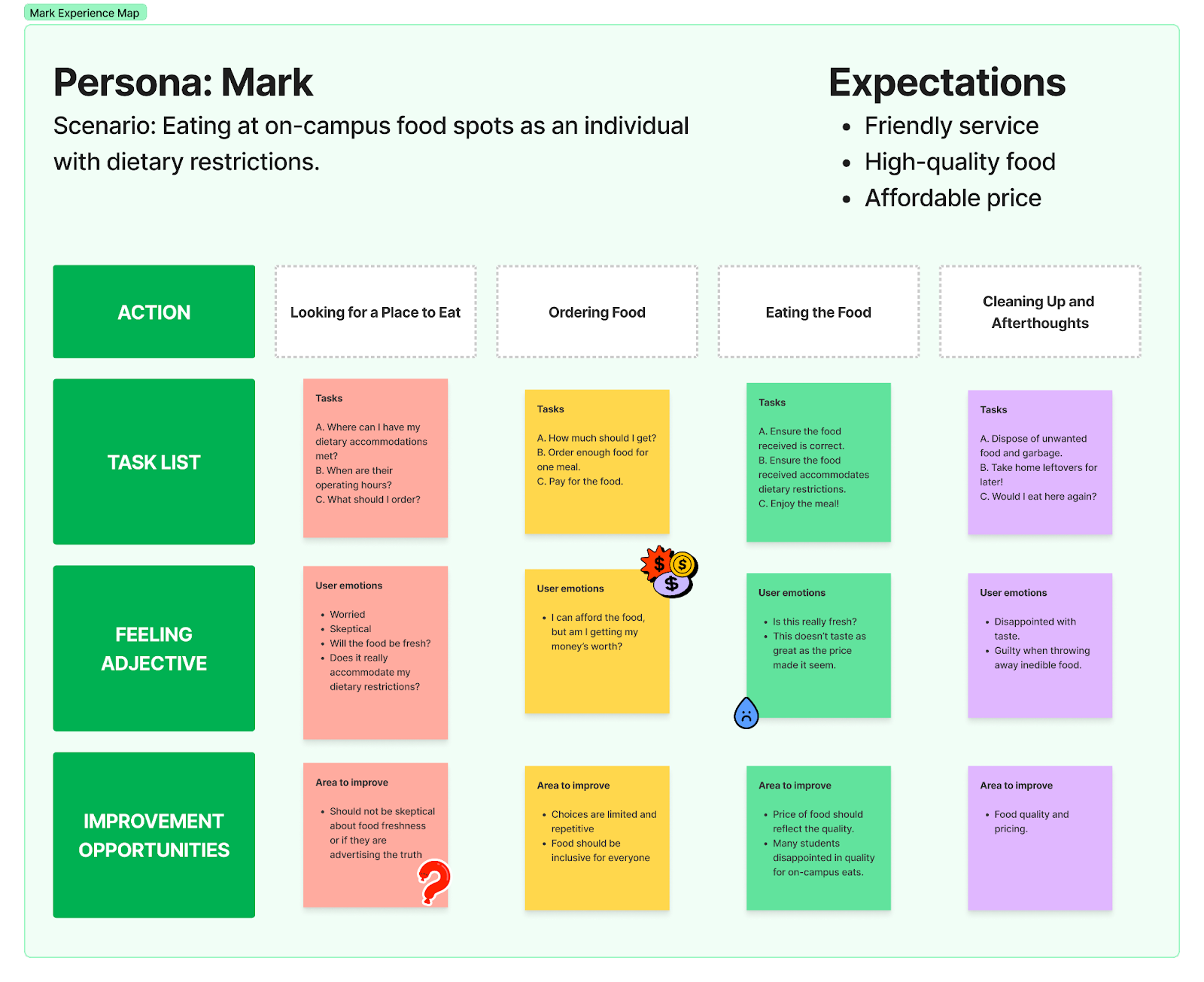
Empathy Map for Persona Example
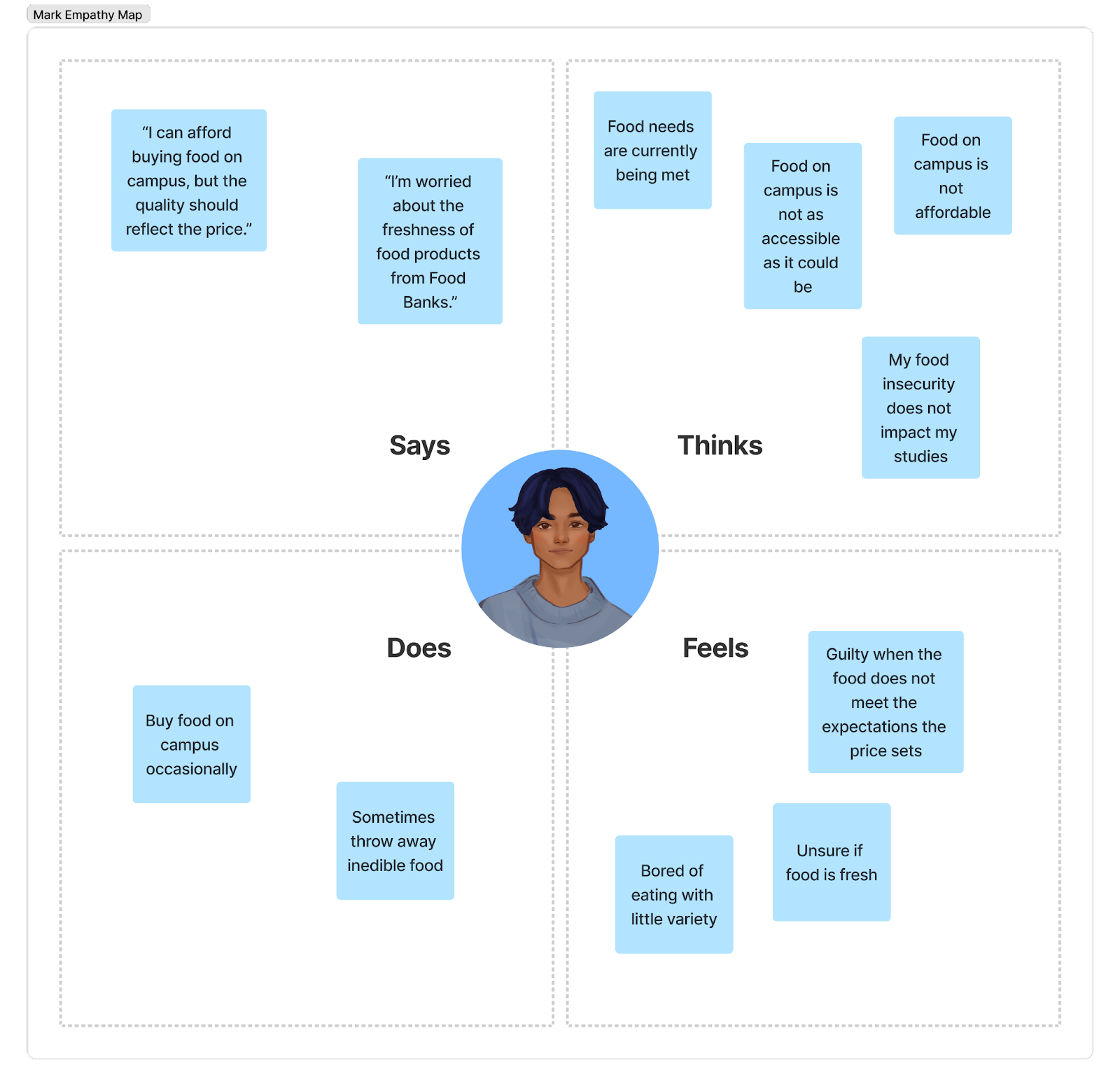
Job Stories
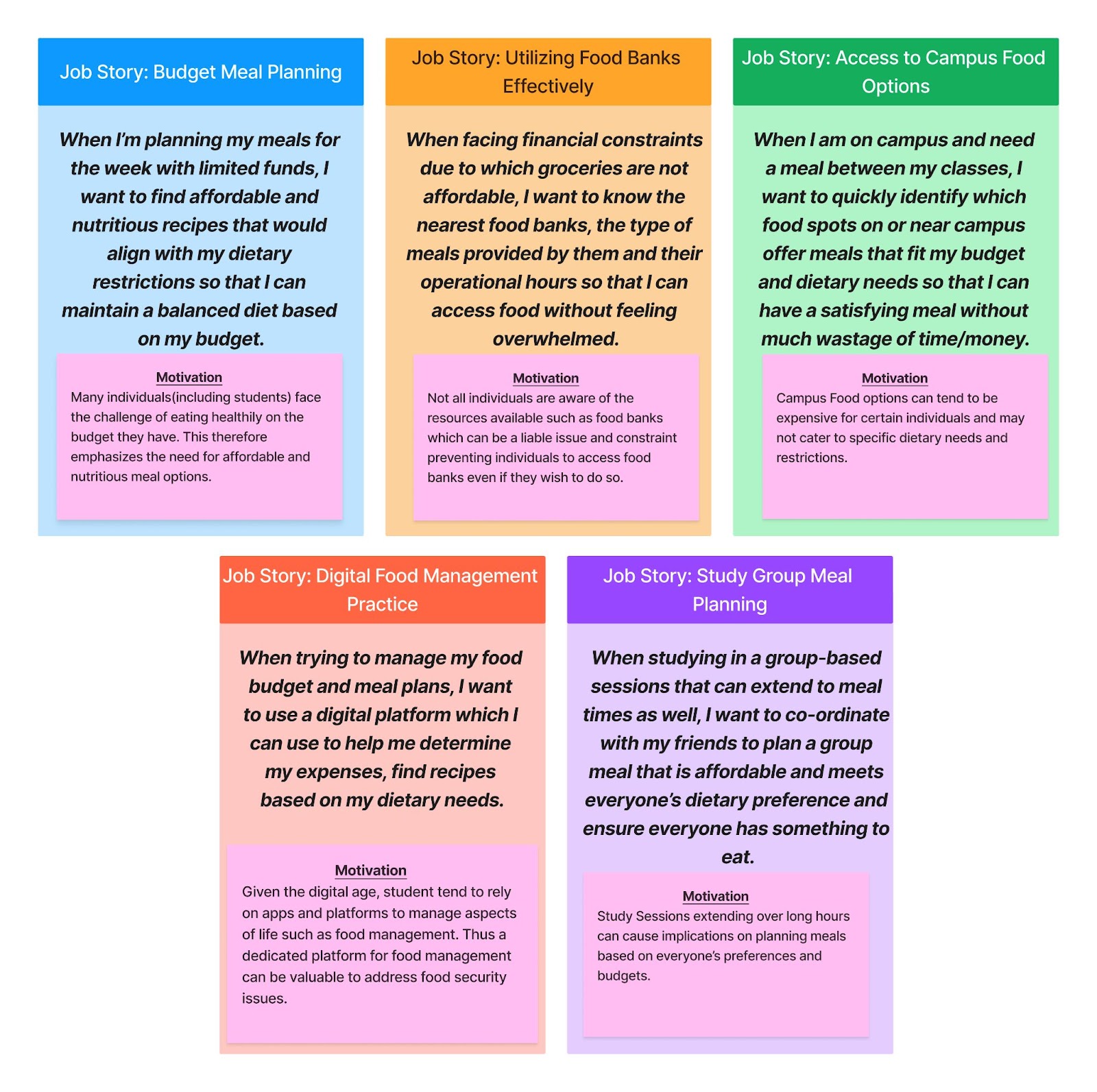
Storyboards
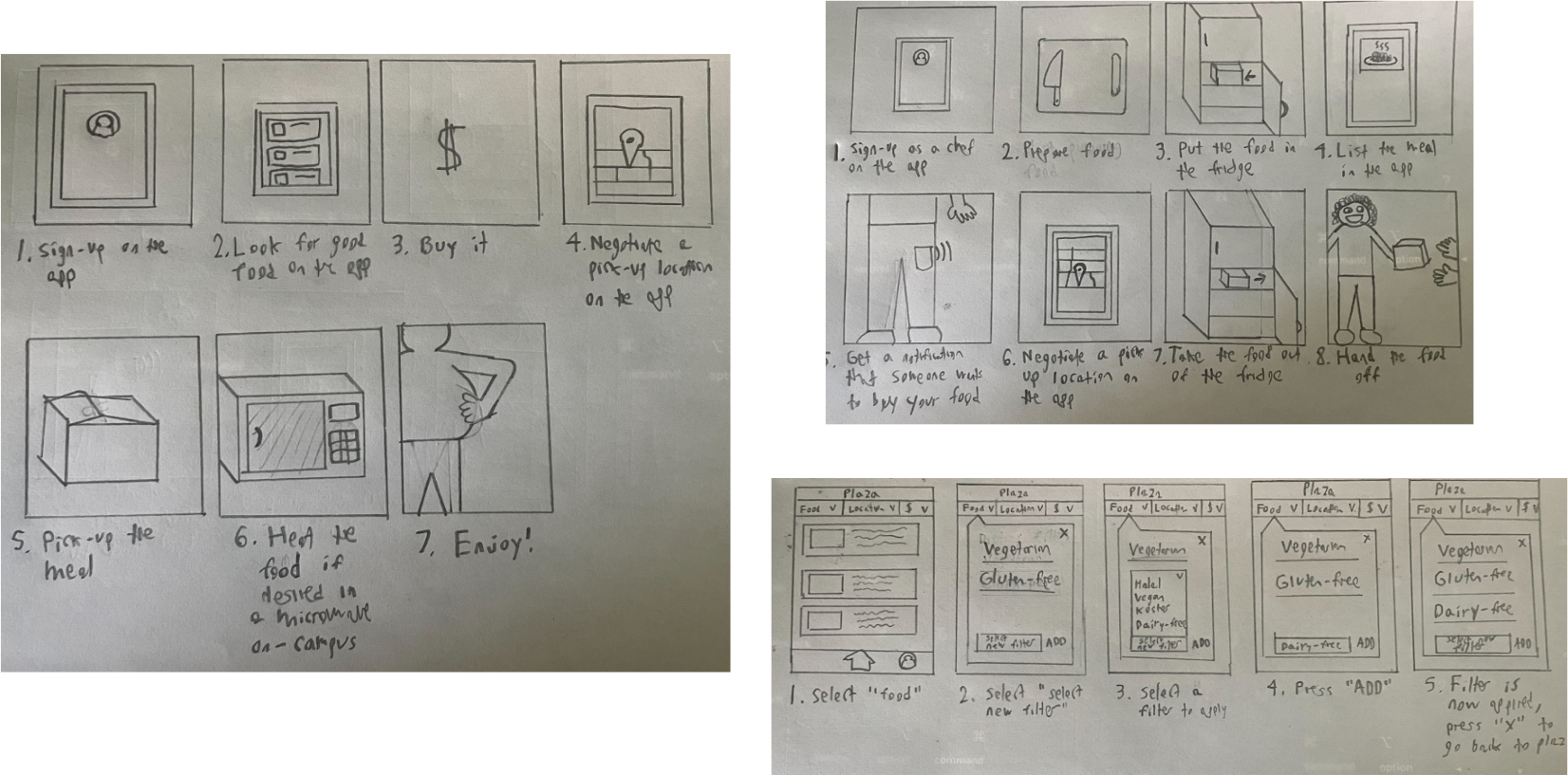
Design
Ideation
To start the design stage, I usedspeed dating method and gathered participants’ reactions to each storyboard scenario. I discovered which speed dating concepts were universally accepted and which ones were not so popular.
POV Statement
- A UofT student needs to … because they are suffering from food insecurity.
- A UofT student needs to … because food options on campus do not satisfy their requirements.
Design requirements
-
Accommodate Dietary Restrictions
- Our design aims to ensure inclusivity, recognizing and respecting the diverse dietary needs of the community, and ensuring that everyone has access to food that aligns with their preferences and beliefs.
-
Ensure Nutritional Adequacy
- Our design emphasizes the importance of nutritional adequacy, ensuring that individuals not only have access to food but that the food is balanced, wholesome, and supports their overall well-being.
-
Prioritize Freshness and Taste
- Our design aims to ensure that food quality is maintained, offering fresh and tasty options that enhance the overall food experience.
-
Promote Affordability
- Our design focuses on affordability, ensuring that everyone, regardless of their financial situation, can access sufficient, quality food without breaking the bank.
Solution
User Flow
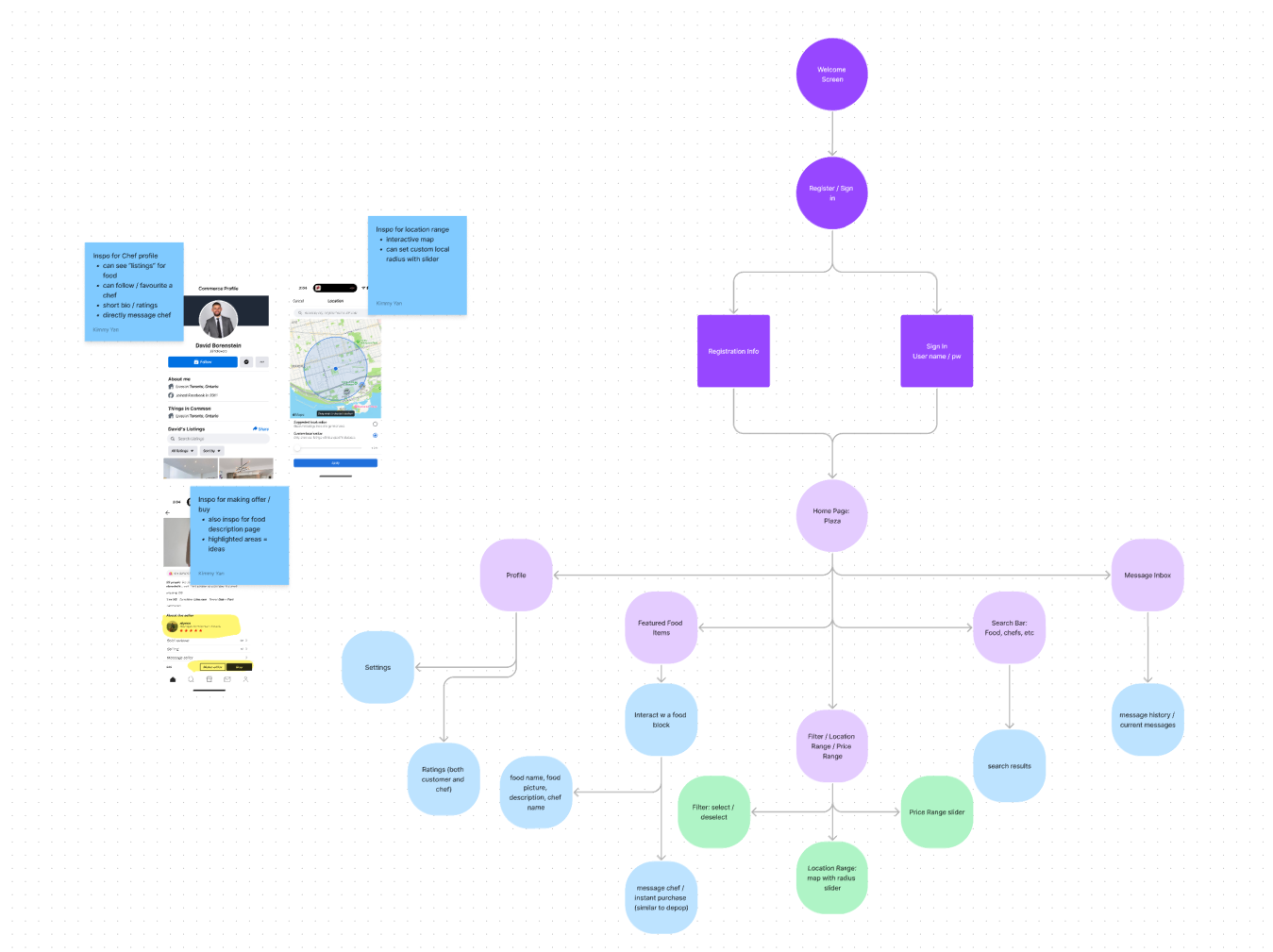
Final Product

Reflection
Representation
Working alongside team at UofToronto was a humbling and fulfilling experience as I was able to apply HCI methods to design for an often underserved population.
Building Empathy
Building empathy and understanding users takes more than just conducting user interviews but requires a deeper understanding of their values and life priorities.
Further Exploration
If we were granted more time and resources, I would have liked to explore and design for other use cases such as other school students and residence at toronto who are not engaged with this program. Our design solutions were targeted at UofT students. However, it would have been interesting to learn more about how to target those with people in the whole city or country.